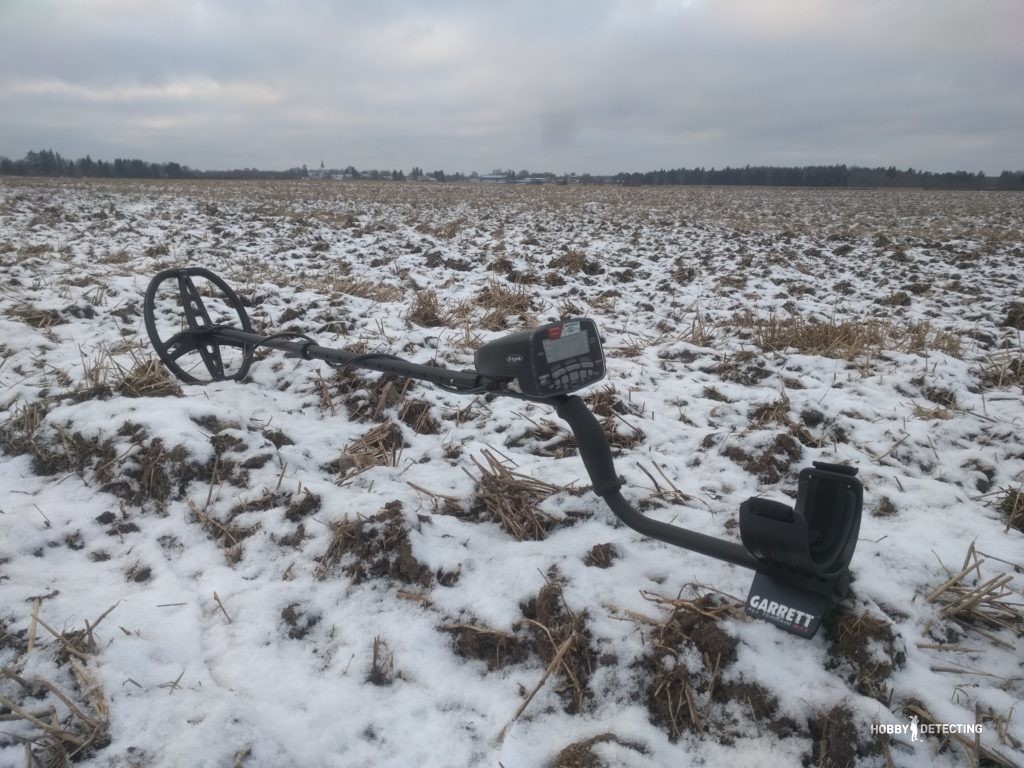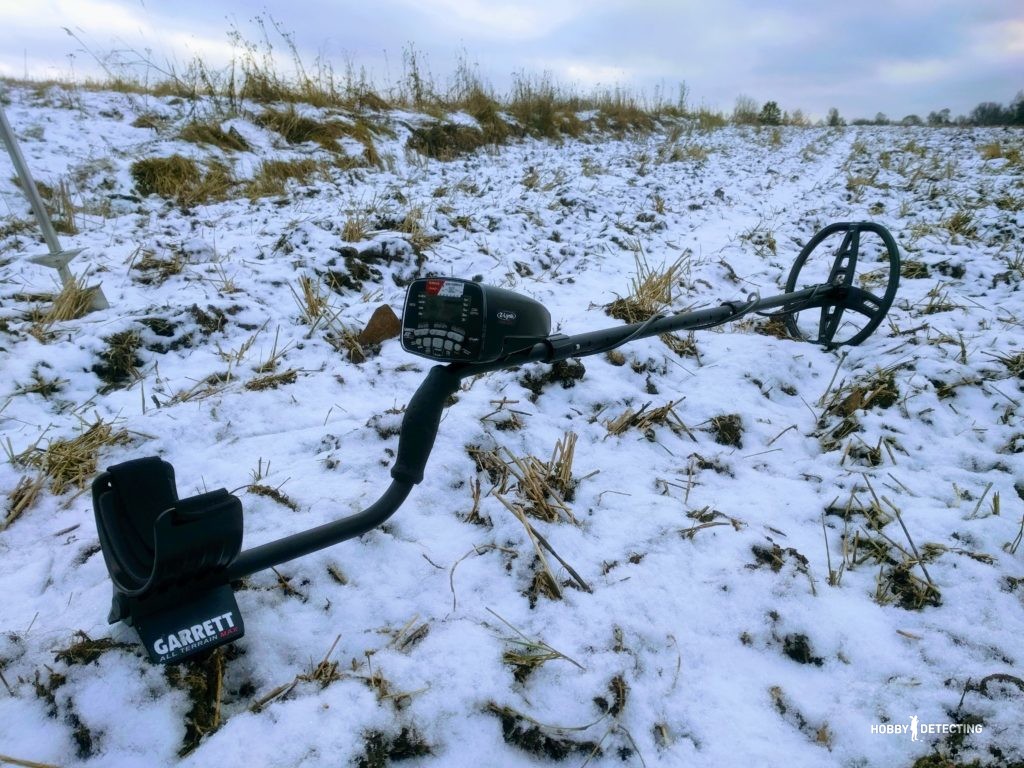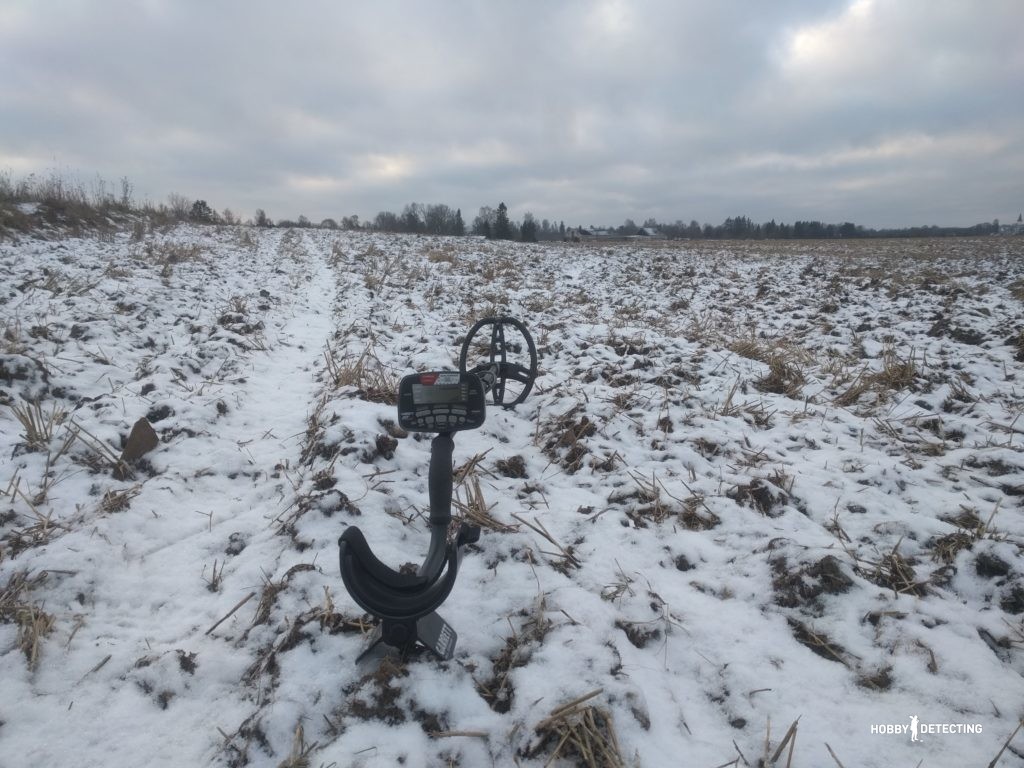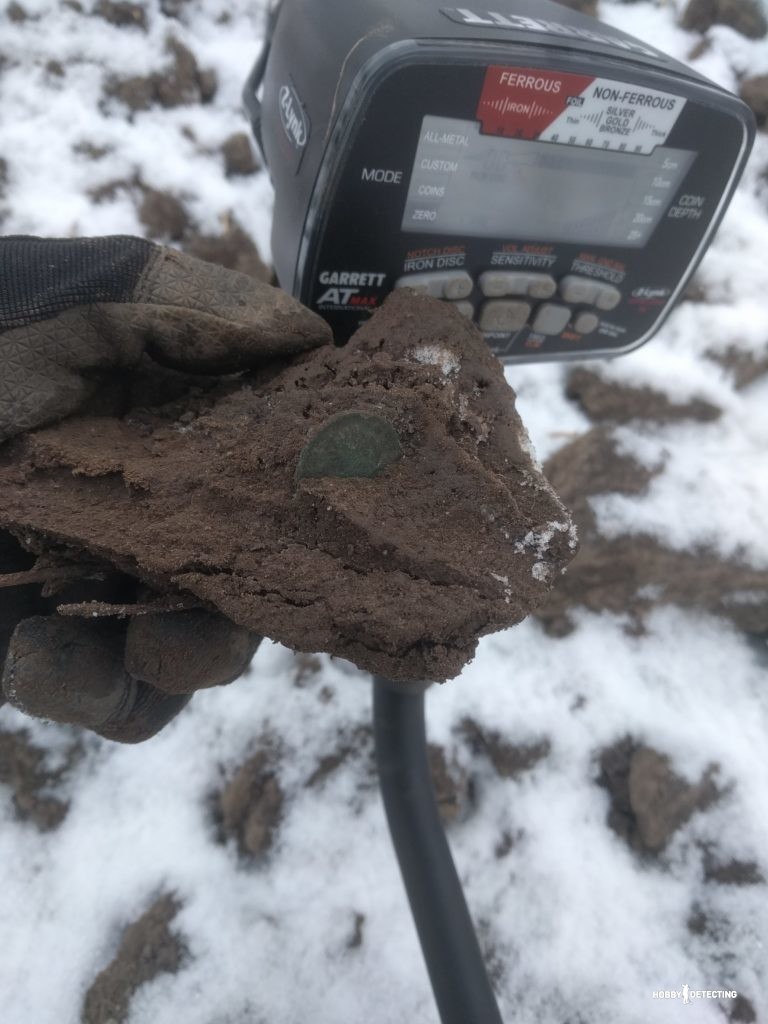First cop with Garrett AT MAX! (Testing a new product, finds+)
Comrades, fireworks! It seems to be winter, but with our weather and maritime climate it will be possible to dig without interruption, as I understand it. Now it’s cold, now it’s hot, and so everything follows each other. Rain on New Year’s Day is a common condition for us, so I didn’t fail to take advantage of the weather and when the ground was a little frozen I went to check a couple of new plowing fields, which I thought about doing back in the late fall, but it’s good that I left now because the ground is frozen and the soil is hard , you can walk like on a golf course, everything is a little covered with snow, we move the reel directly above the ground, beauty!
And to make the cop even more interesting, I took advantage of my friend’s offer and took his brand new Garrett AT MAX, which he bought last week, but he rarely drives a cop himself, so for educational purposes I didn’t I was able to resist such a bold proposal.
Departure for the cop and first acquaintance with Garrett AT MAX
Содержание статьи:
Once upon a time I had a Garrett AT PRO or simply «Proshka», as many people called and call it. So, taking the Garrett AT MAX in my hands, I remembered that feeling, already forgotten for years, of how Proshka lay in my hand. But not everything is so simple.

The Garrett AT MAX turned out to be a little heavier than the Proshka, but the metal detector’s holding handle has become much more comfortable. All the increased weight has now fallen on the detector block and thanks to this, the AT MAX fits like a glove in the hand and is much more comfortable than the Garrett AT PRO, at least in my subjective opinion. I have a big hand, I have enough strength, and therefore it’s a little unusual for me to hold light metal detectors — I’m squeezing the handle too hard.
Settings have also increased. Having quickly glanced at the instructions, I understood the main nuances that were worth remembering and which would be useful on a mine with the AT MAX, I quickly played with the settings before the cop in order to try out what I had read in the instructions in practice. Through practice, everything is remembered better, so use this method, friends!

The backlight turned out to be quite bright, I adjusted the volume to what I needed, I didn’t connect headphones this time because the slightly icy wind made me want to cover my ears more tightly with a hat. The metal detector settings were familiar from Proshka, so everything was simpler with them. The only thing is that a good all-metal mode has been added, that is «all metals», instead of the STD mode on Proshka.

The coil is also made in the same form factor as the AT PRO. But not only for the sake of an external description of the device, I came to the field to dig, but also in order to answer my main question — what happened to the search qualities of the metal detector? Have they improved or gotten worse? What has changed at all?
Has the Garrett AT MAX changed in relation to the Garrett AT PRO?
Sometime back in the fall, I watched a video of a metal detector seller from Ukraine. He makes quite intelligent videos, sometimes, of course, there is something to criticize for, it is clear that the guy sells metal detectors and cannot cover a wide range of tasks and types of search work, but now we are not talking about that. The video itself, which I watched and tried to draw a conclusion on Garrett AT MAX:
It’s funny that the seller of metal detectors also put his channel on monetization — an ad appears from YouTube in the video.
But it’s one thing to make your own landfill, where coins lie for 6 or more months, and another — come to the cop’s place and see how the metal detector behaves in a real cop. Both methods for testing a metal detector are good and we will use them.

And I came to that field where once in the fall my comrade and I walked and picked up coins of the Russian Empire and Medieval silver antiquities. We wrote about this cop in the post: An ordinary autumn coin cop. The field is quite large and needs to be thoroughly bypassed with a large additional reel, but I remembered the places where coins were concentrated and therefore headed to that place to finish it off a little more.
I walked for quite a long time. The place where I went with my Nokta Impact did not give me a single color signal! How does this happen — our comrades had already managed to go there and collect everything, or we ourselves then collected all the finds? I went in ZERO mode with discrimination at 0 and maximum sensitivity. I turned on IRON AUDIO and went around listening to the hardware. Along the way, I dug up a couple of iron signals to check whether the place really became empty before the new plowing?
After walking around the place where the coins had accumulated, I decided to change my location a little and head towards the adjacent edge of the same field to see what could have been left behind after us there. And my calculation was correct!
I immediately caught a confident color signal and was even surprised by such a signal. I listened, dug, and from the depths (about 25 cm) an old button appeared, very beautiful, but at the same time simple in its beauty.

Well, the find was good and pleasant, fortunately it came out at a depth that was good for any metal detector. Let’s move on!
After walking a couple more steps, I came across another signal and couldn’t even believe my eyes — the device hit confidently at 97-98 VDI! Even the most novice cop can understand that this must be something big and interesting, probably even a silver coin! At least, Catherine the Great’s silver ruble hit exactly this figure. I dug and from the depth of Fiskar’s bayonet approximately (and I’m digging with Black Ada Gladius), at a depth of 30 +/- cm lay five kopecks of Catherine the Great, that is, the Second!

Freshly dug beauty! I love picking up nickels, these beautiful and interesting coins have something of their own, alluring, beautiful and, dare I say it, Majestic! When you raise five kopecks E2, the mood is set very good and for the whole kopeck! It’s funny how other diggers could miss this coin, although I myself have not yet gone to that part of the field where I picked up this coin. This means we’ll have to put on a big reel and go through the entire field up and down, since it pleases us so much with coins!
New Garrett hit the nickel with confidence and made my day pleasantly.
But there can never be too many coins, so I moved on. I dug up several garbage signals (traffic jams), where would we be without them? Such things need to be dug, because even if you feel somewhere inside that the signal is a traffic jam, it’s better to check! You never know? Someone else will pass by such a signal, and someone will stop, dig, and pull out some nice old coin!
And my next signal was the Swedish 1/6 Øre of 1683. An ordinary find, but it came out from a good depth, about 28-32 cm. The VDI was stable — 91-92, as it should be in such cases, because the coin is made of copper, and coppers have such a numerical indicator.

The Swede is always a pleasant find. Even if there are no other coins, and such Swedes are trying, that means it’s also not bad. These are almost like the USSR coins in our fields, but more attractive due to their age (almost 400 years!).
It’s a pity that the field was not even plowed, but only the top layer was slightly cultivated, because cereals grew there and the stubble was simply ground with the top layer of soil and we can only look for complex deep signals for various purposes. With cheap and simple equipment, everything is already assembled here on top, for the most part, but I always visit such places and, apparently, I do not return empty-handed!
But there was still a horse pass. Someone missed a great signal and this coin went to me. I successfully dug up a coin right from the top layer and had to carefully and surgically cut it out with a shovel from an icy piece of soil.

The VDI was stable, at the level of 83-85, I was even a little surprised, but the usual Denga 1731 or 1751 appeared, the year is a little difficult to make out, but there are two lines above the year, I will need to wash the coins and look more precisely.
Remembering the time when I was digging with Proshka, I compared my feelings from the AT MAX with my experience with Proshka and, to be honest, Proshka was head and shoulders below the new AT MAX. What I liked most about AT MAX after the first release?
Firstly, the device has become deeper. I walked along the same field where once upon a time I walked with Proshka and picked up good coins. But not that deep. However, the concept of depth here is a little subjective, because over the years it might have become a little rusty.
Secondly, the device has become much clearer and better identifies objects under the coil. If before Garrett always put the key point of AT PRO, how he responds to beer and other traffic jams. This was a feature of the device, but now with the AT MAX there is no longer an emphasis on this. The device shows very confidently what is under the coil — if the signal is a coin, then 95% of the time it is a coin. If it’s a traffic jam, then you can hear the traffic jam. I can hear other colors too, but I see some progress here.
Thirdly, it became much faster and easier to rebuild from the ground. If earlier with AT PRO I had to adjust from the ground for about a minute, tightening the ground manually after automation, now I did it much easier and faster. In principle, this is what was written about, that the device should now be easy to set up on a sea beach, which the same AT PRO could not, for example.
And lastly, the most important and interesting thing is that the device has become more powerful and professional. We take all the points above and add to them wireless headphones, which are mega comfortable and provide excellent sound quality, and the result is a good coin collector in fields, both large and small. Well, don’t forget about water resistance up to 3 meters.
As output — AT MAX has become head and shoulders more serious than its predecessor and is a good competitor to its classmates in the price range. Grandpa Garrett’s policy was always simple — to create a metal detector that could cover most of the tasks and requirements of most diggers and they completed their task, with the AT MAX you can safely go dig for coins without the hope of leaving something behind. Miracles, of course, do not happen, but compared to other devices, the AT MAX is on par. But in terms of simplicity of settings, few can compete with the new product from Garrett; any beginner can quickly and efficiently set up the device the first time.
Results of the first day of digging with AT MAX
The results of the first three hours of digging with AT MAX are quite small and may seem frivolous to some, but this is what real coping is all about!

I didn’t put out any trash, but there weren’t many worthwhile finds. Naturally, if I had been digging in headphones, I would have raised it maybe more, because headphones are great at helping to monitor and check more signals, but the cold did its job. But Catherine the Second’s nickel made the whole day!
It seemed to me that in terms of depth the device caught up with the level of «ICQ with a Tornado coil», which is a very good indicator and, one might say, a measure of depth for all professional metal detectors.< /p>
I will try to keep the device with me and borrow it several times from a friend in order to make more outputs and understand the device better. I even felt a little nostalgia!
I wish everyone peace of mind on the mine and dig in the forests if the fields are frozen, now more and more interesting places are opening up there, where you can’t get to in the summer! And AT MAX can help in this matter, because he will click coins in the forest with a bang!
